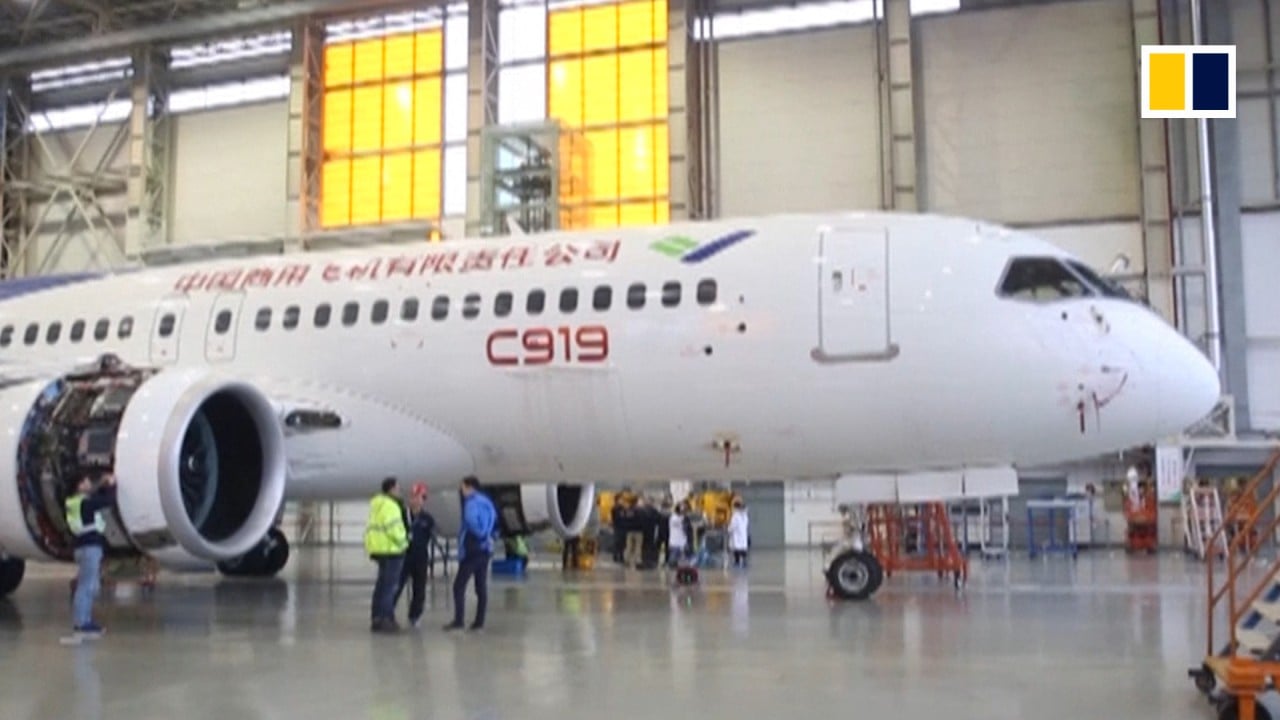China’s aviation capabilities stuck at ‘low-end’ as military-civil fusion weighs on innovation: official report
- China’s aviation sector is being held back by the dominant role of the state and the country’s military-civil fusion strategy, says a new Shanghai report
- The country is only able to make basic aviation parts as a result of inadequate core technology and poor research and development capabilities, the report says

China’s commercial aviation industry is lagging behind international competitors, with the country’s military-civil fusion strategy stifling innovation and state dominance of the sector hampering efficiency, according to a report from the Shanghai government.
Shanghai has been at the forefront of China’s commercial aviation sector, which was identified as one of the key industries set for heavy investment in the 14th five-year plan for 2021-25.
It is difficult for key technologies such as engines, airborne equipment, and new composite materials to reach the international advanced level in the short term
But in a report published on Wednesday by thePaper.cn, a media site owned by the Shanghai government, an official research unit said there was a “gap” between the city’s aviation and aerospace industries and those in the United States and Europe in terms of technology and management.
The report also said China is only able to make low-end aviation parts as a result of “insufficient core technology and system research and development capabilities”.
“It is difficult for key technologies such as engines, airborne equipment, and new composite materials to reach the international advanced level in the short term, leading to being locked at the low end of the industry chain,” said the Development Research Centre of Shanghai Municipal People’s Government.
“In addition, China’s airworthiness certification capabilities are still weak and cannot be fully recognised internationally in the short term.”

